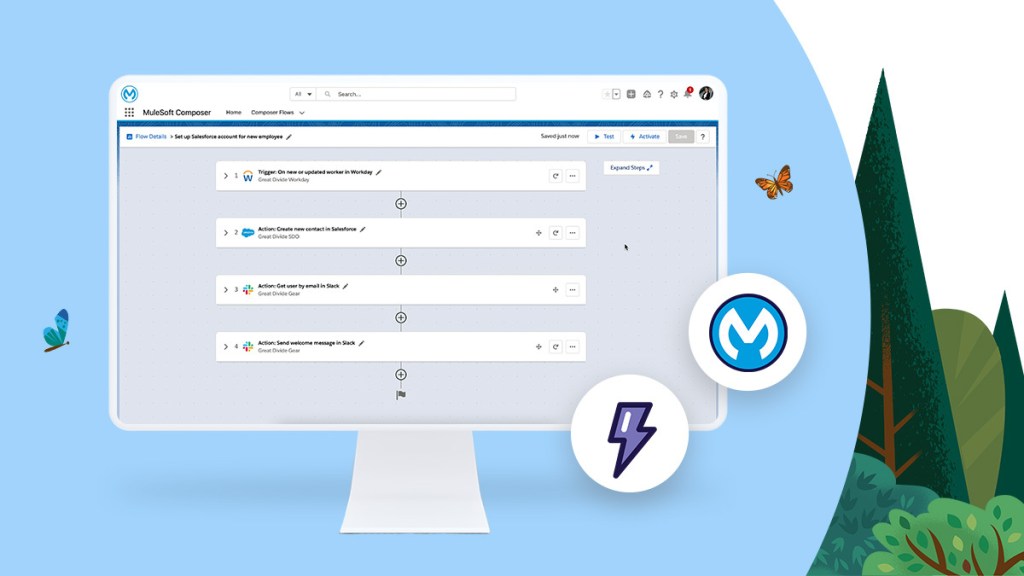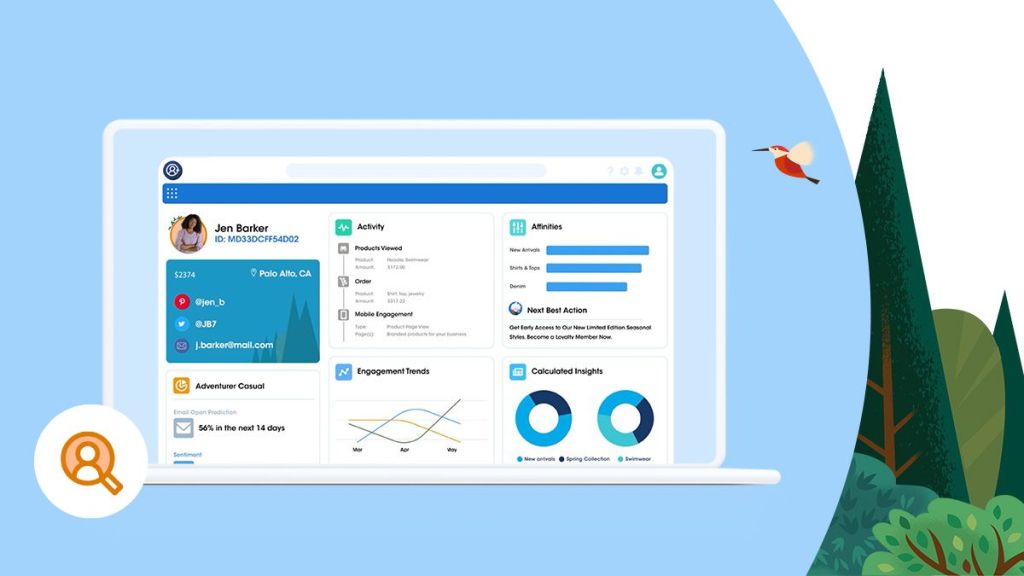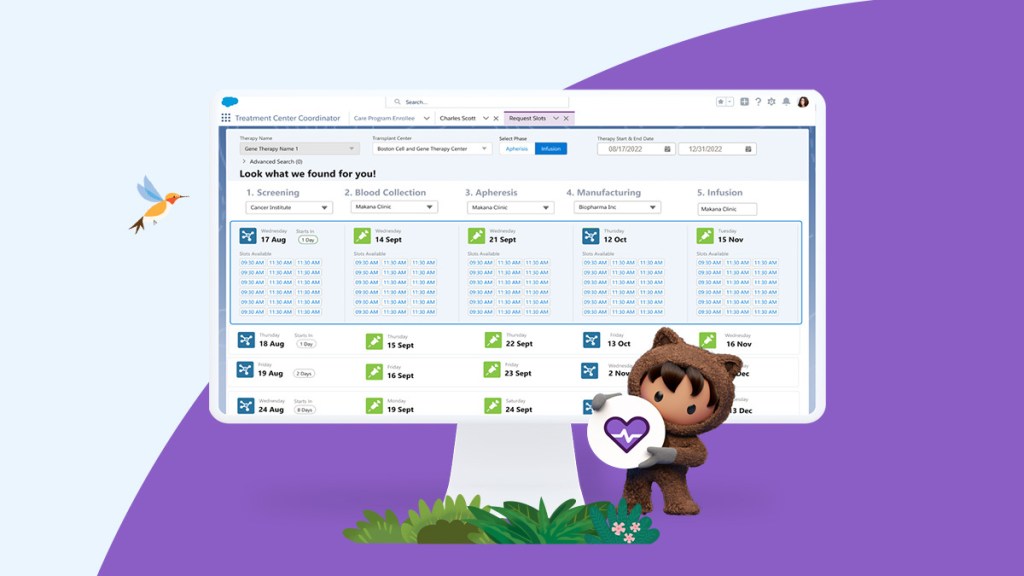From the CEO to the CFO, the CHRO to the CMO, every leader has been asked to be more efficient and productive as economic conditions worsen. For their part, CIOs and IT leaders must identify where technology can drive growth, increase efficiency, and create more business value faster.
When the stakes are high, CIOs and their teams must help the entire company do more with the tools and resources at their disposal. To be successful in this effort, CIOs must embrace what I call “business intimacy” — direct alignment with colleagues across every line of business to truly understand their needs.
Ninety-one percent of senior IT leaders say that existing IT processes are hindering productivity. With efficiency as the goal, and business intimacy as the strategy, CIOs must prioritize automation, a simplified tech stack, and partnerships with the right vendors to improve results and lower costs.
Juan Perez, CIO and EVP, Salesforce
I’ve been a CIO for many years, through economic ups and downs. Here are four ways I have learned that CIOs can drive growth — during ANY economic environment.
Introduce business intimacy to elevate the CIO’s seat at the table
CIOs can increase their relevance and ability to deliver business value by bringing a new set of skills and operating processes to the executive table during a radically different business environment.
This begins by truly understanding broader business needs — what are the priorities, the pain points, the processes, the investments and, most importantly, the technologies their colleagues are dealing with.
This is called business intimacy, and it is key to better understanding the strategic priorities of business partners across sales, service, marketing, commerce, IT, HR, finance, and other teams.
Delivering transformative technology to the company and its customers should always be the priority, but exponentially so amid challenging and uncertain economic times. CIOs must be laser focused on delivering business value.
JUAN PEREZ, CIO AND EVP, SALESFORCE
CIOs have a dotted line to every business leader — including the CEO, CFO, CMO, and others — each of whom is being asked to do more with less. By closely partnering with their key business leaders, CIOs can help prioritize amid budget constraints and deliver the technology they need to increase efficiency, improve results, and lower costs.
Find ways to do “more with more”
Gone is the tired adage of “doing more with less.” What got a company to where it is today is not necessarily what will enable its success in the future. As companies mature, companies must shift from a “high-growth at high-cost” startup mindset to one that is dedicated to operational excellence and profitability by doing “more with more.”
For CIOs, that means activities like scaling services to support future business growth without a commensurate increase in headcount. Scaling IT support without headcount is the very definition of ‘more, with more’ — more operational rigor, more automation, more training, more clarity on roles and responsibilities, more simplification, more process and practice standardization, more flexibility and agility, and more process excellence, to name a few.
By leaning more into the fundamentals of operational excellence and profitability, CIOs will see more success.
-

Salesforce Launches Automation Everywhere Bundle to Help Companies Lower Costs, Boost Productivity, and Deliver Success Now
-

Salesforce Launches New Marketing Effectiveness Bundle to Help Companies Reduce Costs and Deliver Success Now
-

Salesforce Launches Analytics Bundle to Help Customers Increase Efficiency with Tableau and Achieve Success Now
-

Salesforce Announces Patient 360 for Health Innovations to Help Lower Costs and Deliver More Efficient Care for Patient Success Now
Increase efficiency and productivity with Automation and AI — across every line of business
Today, CEOs and other business leaders are focused on efficient growth, cost savings, and increased productivity. Automation and AI can achieve these goals and fuel efficient near-term and long-term growth for technical to non-technical departments like sales, customer service, marketing, and commerce.
Automation reduces the work that humans have to do on repetitive or monotonous tasks, which means a better experience for customers and lower stress for internal teams. In fact, 79% of automation users say these tools fuel productivity. Salesforce’s automation technology, called Flow, has saved customers more than 109 billion hours of work, which amounts to $2.19 trillion in business value.
We’re not only using automation to increase efficiency internally, but also externally for customers in our products. For example, we’re exploring how Slack can be used to increase sales productivity and helps close deals faster by automatically delivering real-time insights to connect sellers, account teams, and cross-functional stakeholders.
By using automation, Salesforce customers like RBC Wealth Management enhanced their client onboarding experience by using low-code automation with custom functionality to automate its case management workflows. As a result, onboarding time has been reduced from weeks to just 24 minutes on average.
For Vonage, a global cloud communications leader, automation increased collaboration, efficiency, and productivity, while driving more customer value. With Flow’s low-code capabilities, Vonage simplified quote creation and management, which decreased provisioning time while also reducing the opportunity for human error.
AI can help increase revenue by delivering deep insights about every individual customer based on past interactions. These AI insights strengthen customer relationships, prioritize sales leads, expedite service cases, and improve marketing campaigns to drive success and growth.
For example, L’Oreal uses Einstein Product Recommendations to deliver AI-powered product recommendations based on a consumer’s browsing or purchase history. Now, if a customer adds lightweight sunscreen to their cart, Einstein may recommend SPF lip-balms or moisturizers at checkout. These predictive product recommendations have generated 15% to 20% of sales for one of L’Oreal’s B2C brands.
Future-proof the CIO operational model with product-focused teams
Gaps in an operating model can lead to inconsistent delivery, duplicative work for teams, inconsistent roles and responsibilities, and confusion for business partners.
The future-proof CIO operating model requires a blueprint for the entire technology organization. This model should be built with input from internal and external groups. Leaders across the CIO’s team should map their current functions into this blueprint and align work to defined roles and responsibilities.
This operating model is organized by “products” – a logical grouping of technology capabilities which deliver a set of business outcomes. This allows the CIO to establish true ownership and accountability and prioritize project work that maps to their strategy and long-term roadmap.
The model also increases employee satisfaction – many CIOs have heard feedback from employees that it is not always clear what they’re doing, what the team prioritizes, and how each individual role supports the required work. By aligning to a consistent operating model, with clearly defined roles and responsibilities for every team member — guided by Agile methodologies — CIOs can provide the clarity and consistency employees need to do their best work and ensure their time and energy are dedicated to a company’s top priorities.
The benefits to businesses in an uncertain economy are clear: Teams embracing agility typically deliver a 30% increase in efficiency, customer satisfaction, employee engagement, and operational performance.
Adapting to challenging times
These tips are applicable to any economic environment, but are especially important as CIOs help guide their company through challenging times.
This will not be the last time companies need to adapt. With business intimacy, doing “more with more,” automation and AI, a focused operating model and blueprint, and a focus on productivity, CIOs can help fuel growth by increasing customer satisfaction and lowering costs. The stakes could not be higher.
See how companies are driving IT cost savings with Salesforce.



















